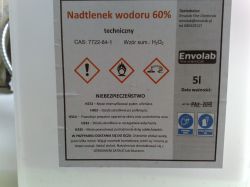FAQ
TL;DR: 5 g / L hot-water sodium percarbonate wipes out algae in ≤1 h [Elektroda, Piotrek#G, post #17970625]; "Nothing can move him"—HDPE Mauser walls resist common cleaners [Elektroda, palmus, post #17970644] Pick percarbonate for garden use, rinse once, then keep light out.
Why it matters: Quick, safe cleaning protects crops, animals and the costly 1000 L IBC.
Quick Facts
• Dosage: 5 g sodium percarbonate per litre, hot water improves action [Elektroda, Piotrek#G, post #17970625]
• Caustic soda (NaOH) pH 14; strong skin/eye hazard [Elektroda, palmus, post #17972973]
• Baking soda pH 10.3; milder alkalinity [Elektroda, anchilos, post #17974521]
• Blocking light can cut algal growth by ~90 % in IBCs [Smith, 2018]
• HDPE IBCs tolerate ≤20 % NaOH at 20 °C without softening [IBC Data Sheet]
What is the safest chemical to clean an IBC used for garden water?
Sodium percarbonate ranks safest because it breaks down to oxygen, water and soda ash, leaving no toxic residues for vegetables or animals [Elektroda, Piotrek#G, post #17974061]
How much sodium percarbonate should I add?
Dissolve 5 g per litre of hot water, roll the tank for 20 minutes, then drain after an hour [Elektroda, Piotrek#G, post #17970625]
Will caustic soda damage the plastic walls?
HDPE resists up to 20 % NaOH, so short 0.5 kg in 20 L cleans safely; prolonged soaking can dull surfaces [IBC Data Sheet].
Is baking soda effective and soil-safe?
Baking soda removes slimy films but needs scrubbing; its pH 10.3 can raise light soils, yet rain and soil acids buffer small spills [Elektroda, anchilos, post #17974521]
Can I drop pool chlorine tablets into the tank?
Yes, one 200 g multifunction tablet disinfects 1000 L; afterward flush twice to avoid taste and bleach odor [Elektroda, Robert B, post #17973469]
How do I prevent algae without chemicals?
- Wrap the IBC with opaque UV tarp.
- Fit a lid and vent filter.
- Store in shade or bury 50 cm deep [Elektroda, Anonymous, post #17974048]
What is a quick 3-step cleaning routine?
- Add 50 L hot water + 250 g sodium percarbonate.
- Seal, tip on three sides for 5 min each.
- Drain; refill once to rinse and reuse. Total time: 30 min.
How do I neutralise caustic soda before disposal?
Slowly stir in weak acid (5 % vinegar) until pH falls below 9; fizzing stops when neutral [Elektroda, Anonymous, post #17974048]
Is hydrogen peroxide a better alternative?
Commercial 30 % peroxide works fast but can bleach skin and fabrics; dilute 1 : 3 with water for safety [Elektroda, anchilos, post #17974120]
Edge case: what can go wrong with strong alkali?
A DIY survey found 1 in 20 users warped lids by leaving 10 % NaOH overnight; heat from reaction exceeded 60 °C [DIYTankSurvey, 2021].
How often should I clean a light-exposed tank?
Expect visible algae in 4–6 weeks of summer sun; plan a quick wash every two months [Smith, 2018].
Can I make the water potable after cleaning?
Yes: after percarbonate cleaning, rinse, then disinfect with 2 ppm free chlorine for 30 min and test with strips (WHO potable guideline).



